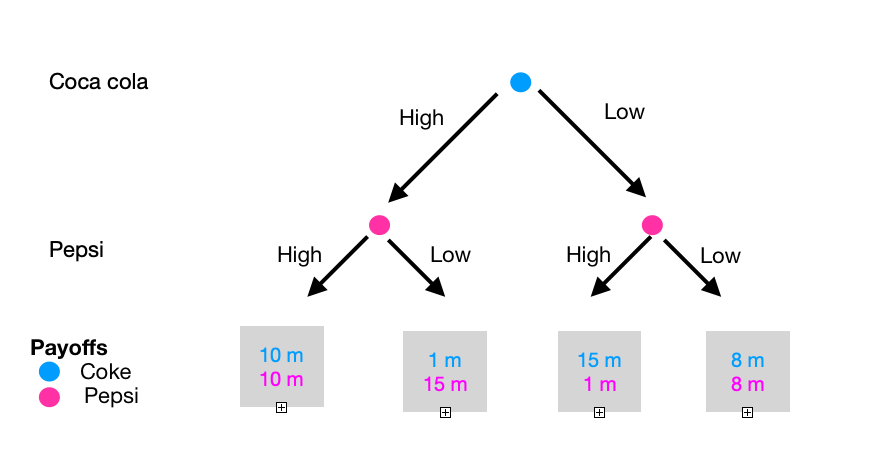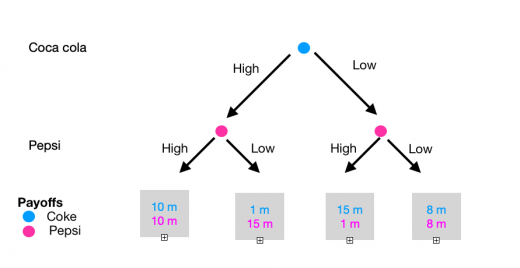Competitive Strategy-Creating an Unbeatable Business
Competitive Strategy-Creating an Unbeatable Business

Competitive strategy, in my opinion, is a collection of different strategies and concepts and its usage in staying competitive or ahead of the market. It involves a lot of research, planning, and execution to gain a competitive edge or increased market share.
Before entering into a market, any company must conduct research on the existing players and the extent of the need for the solution. Also, creating buyer profiles based on who would be the early adopters, why would they buy, what features are they looking for, what are they comparing it with is important.
The research activity is not just important during the inception of a company but must be conducted as an ongoing practice throughout the lifecycle of a firm.
Using competitive strategy, the company may then decide to position itself as an offensive or a defensive player in the market. While doing so it will most likely use one of the 3 generic competitive strategies as identified by Michael Porter.
1. Cost leadership
Cost leadership is an effective strategy for products that are more commoditized, meaning those that have no much difference in the market from the others already existing. Example commodities like groceries.
As a detailed example, let’s take the recent price wars between the big telecom giants in India. When Reliance Jio entered the market with already established incumbents, it decided to use Cost leadership as a strategy to gain market share and was successful in this effort.
Since there was no differentiation or focus it wanted to create in comparison to the other existing players like Airtel and Vodafone, it decided to win the battle by being the cheapest service.
Pitfalls:
- A change in market need might diminish the relevancy of the product and low-cost operations mean lack of innovation to stay abreast.
- It’s easy for other players to compete under the same strategy leading to price wars.
- Usually, this strategy does not account for future costs that may reduce the company’s profits.
2. Differentiation
When a company is able to create a differentiation from the other players, it has an opportunity to gain new territories as well as price the product at a higher scale than its competitors. The differentiation can be in terms of anything, such as product design, service, personnel or brand image.
Personally I consider this as the most effective strategy since it allows for some leverage in building reputation and loyal clientele and also creating an entry barrier.
We can take the example of Starbucks that took one of the most generic commodities like coffee and differentiated itself from the market by offering high-quality coffee and charging above-average prices and most importantly offering an atmosphere or ambiance that is hard to copy by the competitors.
Pitfalls:
- If the differentiating company is priced highly, a competitor may offer something similar for a lower price and the customers might be willing to sacrifice a few features to save costs.
- A competitor may copy the differentiation and the company could lose its uniqueness.
- There may be a reduction in the target market because of its focus only on customers who are willing to pay for differentiation.
3. Focus
A small company may not want to spend money and effort trying to cover a broad spectrum of the market. In such cases, it is ideal to focus all energies into one or two markets and create a niche first. Market research to figure out the high ROI markets or where the competition is more vulnerable is the best way to decide on an entry. This strategy can also be used by big companies to seek an advantage in a particular market.
For example, Mac cosmetics started off by targeting only beauty professionals and models and later expanded itself to a market comprising mainly women who are looking for high-quality products and are willing to pay above-average prices. Hence, it does not make sense for a marketer at Mac to spend the marketing budget in promoting the products to men or to an audience that is price sensitive.
Pitfalls:
- The sales of the product might be limited due to the size of the market, thus making future growth more challenging.
- Being too specific or too focused gives rise to threats from companies with more broadly incorporated products easily replacing the smaller players.
Game Theory
Since the above-mentioned strategies are not being used by a single player and are most definitely being used by other players too, it gets more interesting and thus, we may also need to understand a bit about the games that can be played between the players as well.
Basic Rules of Games Theory
1. Identify the players in the market.
2. Identify the actions to be performed like marketing, creating a differentiation, penetrating a new market, etc.
3. Figure out the rules of the game such as whether the players are making strategies based on what the others are doing or regardless of it.
4. Is it a simultaneous game or a sequential game (In a simultaneous game, each player has only one move, and all moves are made simultaneously. Example: The rock, scissors, paper game. In a sequential game, no two players move at the same time, and players may have to move several times. There are games that are neither simultaneous nor sequential. Example: The game of poker).
5. It may or may not be a zero-sum game (meaning sum of all payoffs is equal to zero). Real-world games are generally never zero-sum games.
Let’s first explore the types of games:
Simultaneous Games
Let’s take an instance where Pepsi and Coca-cola are both selling soft-drinks. They share the markets equally. And each company has an option to start an ad campaign for $ 2 million in order to increase their market share.
Payoffs (hypothetical figures):
So if a player advertises for 2m, they stand to gain a market share of 5m.
Suppose the total market size is 10 m.
- A dominant strategy-each player decides to spend 2m to capture 5m of the market share, thus we can calculate that their profit after expenses is 5m – 2m = 3m
- Both don’t advertise-Each get half i.e 5m of the market share (split the market without spending)
- Only one advertises-the firm that advertises takes 80% market share. So its profit after expenses will be 8m-2m= 6m. The other firm is left only with 2% share = 2m
Plotting the above game in a matrix below:
| Advertise | Do not advertise | |
| Advertise | 3m/3m | 6m/2m |
| Do not advertise | 2m/6m | 5m/5m |
This is a two-player, non-zero-sum game.
In a Simultaneous game, both the companies have to decide to either market or not without being aware of the other’s choices. They can choose one of the below strategies:
Dominant Strategy
Always does better than any other strategy. Hence, a rational player should always choose this strategy. It means, in the above situation, one is better off choosing to advertise and spending 2m.
Dominated strategy
This never does better than another strategy. A rational player will never choose this. Not to advertise is a dominated strategy that should not be chosen as any rational opponent will always choose to advertise and your company will end up losing market share if you choose not to.
Nash Equilibrium
A dominant strategy equilibrium is always a Nash equilibrium. It is an equilibrium where no player will benefit from a change in the current strategy, assuming the other player does not change their strategy. Not all games will have a Nash equilibrium. For example; in a goalie and keeper game where there is never a situation where both can win. Also, there can be games with more than one Nash equilibrium.
Nash equilibrium in the above Coke and Pepsi example is to choose to advertise. Because both the companies are better off when they advertise.
But here comes the Nash equilibrium in the form of prisoner’s dilemma. (you can read more about prisoner’s dilemma here )
Both Coke and Pepsi know that they are better off not having advertising. But they won’t choose that strategy as they have individual incentives to advertise. So, a prisoner’s dilemma does not maximize the player’s profits.
Pareto Optimal
In Pareto optimal, there is no other outcome that makes every player almost equally well off and at least one player strictly better off. Any change in this situation will lead to one of the players in a worse condition. Nash equilibrium and Pareto optimal are often misunderstood with each other and you will need to do deeper research to get a strong grasp of both concepts.
A Nash equilibrium is not necessarily Pareto optimal, and a Pareto optimal solution is not necessarily a Nash equilibrium.
In the above example, both companies deciding not to advertise is Pareto optimal.
Sequential games
In a sequential game, one player moves first and the other players move after receiving the information from the previous player. For example- Chess.
One can represent a sequential game using a game tree.

Taking the same two companies as an example let us map a strategic decision of pricing the soft-drinks in the market. Let’s say Coca-cola has two choices, either to price their drinks high or low. If they price it high and Pepsi follows suit then they both stand to win 10m of market share.
But, suppose Pepsi decides to price their drinks lower, then coke will lose a considerable market share. If Coke prices it low and Pepsi decided to price it low too, then they both share the market with 8m each.
Suppose as a firm you want to backtrack into analyzing what decision will be the best for you. All you require to do is some Backward Induction. If you are a strategic advisor for Coke, you can backtrack using this game tree. You can figure that a rational competitor, who in this situation is Pepsi, would unlikely go for high pricing of the product since it will more likely be benefited by placing its product in the low price range.
Activity:
For the above game, tree example try to figure out the Dominant, Dominated, Nash equilibrium, and Pareto optimal situations.
Answer:
Dominant: 8m 8m
Dominated: Deciding to price high is a dominant strategy in this case.
Nash equilibrium: 8m 8m
Pareto Optimal: 10m 10m
Reference reading:
Game Theory- http://faculty.econ.ucdavis.edu/faculty/bonanno/PDF/GT_book.pdf
Backward Induction- https://www.investopedia.com/terms/b/backward-induction.asp
The post Competitive Strategy-Creating an Unbeatable Business appeared first on ReadWrite.
(13)


